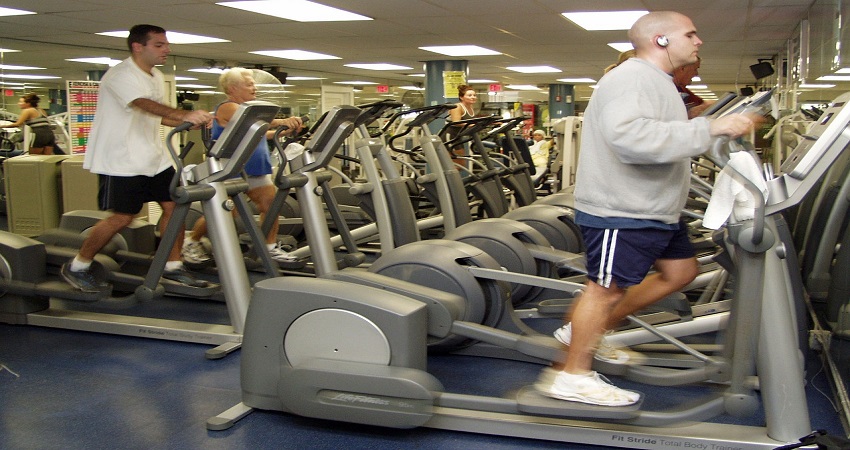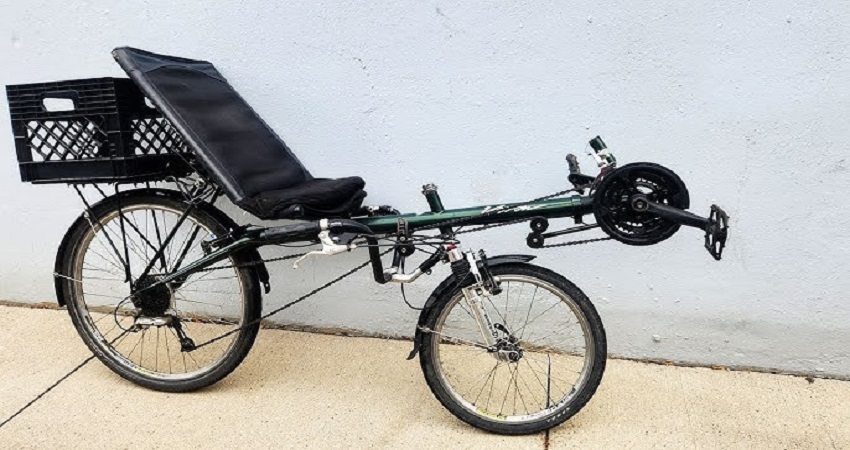
What Is The Purpose Of A Recumbent Bicycle?

The purpose of a recumbent bicycle is to provide a comfortable and ergonomic riding position for cyclists. Unlike traditional bicycles, recumbent bikes feature a reclined seating position, allowing riders to distribute their weight evenly, reduce strain on the back and neck, and improve overall comfort.
With the pedals positioned in front of the rider, recumbent bicycles offer a more efficient pedaling motion and greater speed potential. These bikes are particularly suitable for individuals with back or joint problems, as well as those seeking a more relaxing and enjoyable cycling experience.
Whether for leisurely rides or long-distance touring, recumbent bikes offer a unique alternative to conventional bicycles.
Benefits Of A Recumbent Bicycle
Recumbent bicycles offer numerous benefits that make them a popular choice for both casual riders and serious cyclists. These benefits include improved comfort, reduced joint strain, and enhanced aerodynamics. Let’s take a closer look at each of these advantages.
Improved Comfort
One of the standout features of a recumbent bicycle is its superior comfort compared to traditional upright bicycles. Instead of sitting on a small, narrow saddle, riders of recumbent bikes can relax into a large, cushioned seat that provides support for their entire back. This ergonomic design allows riders to distribute their weight evenly, reducing the risk of discomfort or pain in the lower back, neck, and hands.
Reduced Joint Strain
Another significant benefit of recumbent bicycles is the reduced strain they place on joints. In an upright bicycle, the rider’s body weight is primarily supported by the wrists, hands, and knees. This can lead to joint pain and discomfort, particularly during long rides.
However, in a recumbent bicycle, the body weight is distributed over a larger area, with the backrest supporting a significant portion of the load. This design helps to minimize stress on the joints, making recumbent bicycles an excellent choice for individuals with joint issues or those recovering from injuries.
Enhanced Aerodynamics
Recumbent bicycles are renowned for their streamlined design, which offers excellent aerodynamics. Unlike upright bicycles, where the rider sits upright and faces wind resistance, recumbent bicycles allow the rider to recline in a position that greatly reduces air resistance. This aerodynamic advantage translates into faster speeds and increased efficiency when riding. Additionally, the low center of gravity of a recumbent bicycle contributes to better stability, especially when making turns or riding at high speeds.
Muscle Engagement
A recumbent bicycle promotes muscle engagement by targeting different muscles in the lower body, including the glutes, quadriceps, and hamstrings. It provides a comfortable and low-impact workout while improving cardiovascular health and promoting overall strength and endurance.
Lower Body
One of the main benefits of riding a recumbent bicycle is the engagement of the lower body muscles. Unlike traditional upright bicycles, recumbent bikes provide a unique seating position that allows for a more efficient and targeted workout for the legs and hips.
- Recumbent bicycles place the rider in a semi-reclined position, distributing the rider’s weight over a larger surface area.
- This results in reduced pressure on the joints, making it an ideal exercise option for individuals with knee, hip, or back pain.
The primary muscles engaged in the lower body while riding a recumbent bicycle include:
Quadriceps
The quadriceps, located at the front of the thigh, are responsible for extending the leg at the knee joint. They play a crucial role in propelling the pedals of a recumbent bike forward, providing power and strength to each stroke.
Hamstrings
The hamstrings, situated at the back of the thigh, act as the antagonist muscle group to the quadriceps. While the quadriceps contract to extend the leg, the hamstrings work to flex the knee, allowing for a complete pedal stroke.
Glutes
The gluteal muscles, commonly known as the glutes, are the muscles of the buttocks. They serve to extend the hips, providing stability and power during the pedaling motion. Riding a recumbent bike can help strengthen and tone the glutes, leading to improved overall lower body strength.
Calf Muscles
The calf muscles, including the gastrocnemius and soleus, are located at the back of the lower leg. These muscles assist in pointing the toes downward, which is an essential part of the pedal stroke on a recumbent bicycle. Engaging the calf muscles not only strengthens them but also aids in circulation and can reduce the risk of calf cramps.
Core
In addition to the lower body muscles, riding a recumbent bicycle also engages the core muscles. The core, which includes the muscles of the abdomen, lower back, and pelvis, plays a vital role in providing stability and balance while biking.
- The unique seating position of a recumbent bike encourages a more upright posture, which activates and strengthens the core muscles.
- Engaging the core muscles while riding can help improve posture and prevent lower back pain.
Upper Body
While the primary focus of a recumbent bicycle is on the lower body and core muscles, the upper body also experiences some engagement during a ride.
- The arms and shoulders serve to support the upper body and maintain a comfortable riding position.
- While not the main source of power, the upper body provides stability and control while steering and maneuvering the recumbent bike.
Overall, riding a recumbent bicycle provides a comprehensive workout that engages the lower body, core, and even the upper body muscles. This low-impact exercise option can be beneficial for individuals of all fitness levels, allowing them to strengthen and tone their muscles while minimizing the strain on their joints.
Cardiovascular Health
A recumbent bicycle offers numerous benefits for cardiovascular health. Cardiovascular exercises play a crucial role in maintaining overall fitness, enhancing heart health, and improving stamina. Recumbent bicycles are an excellent option for individuals seeking a low-impact workout that provides an effective cardiovascular workout.
Lower Intensity Workouts
One of the key advantages of using a recumbent bicycle for cardiovascular health is the ability to engage in lower intensity workouts. Traditional bicycles often strain the back and joints due to the upright position, making high-intensity workouts challenging for some individuals.
However, recumbent bikes feature a reclined seat and a backrest, allowing for a more relaxed position, reducing strain on the body. With the option to adjust resistance levels, riders can customize their workouts to match their intensity preferences. This makes recumbent bikes ideal for beginners, older adults, or anyone recovering from injuries.
Longer Durations
Another advantage of recumbent bicycles for cardiovascular health is the ability to engage in longer durations of exercise. The comfortable and supportive design of these bikes enables users to endure longer workout sessions without undue discomfort or fatigue. Longer durations of exercise allow for a sustained increase in heart rate, promoting an improved cardiovascular system and enhanced endurance. Whether you prefer shorter, more intense sessions or extended endurance training, recumbent bicycles can accommodate a variety of workout goals.
Injury Prevention
Protecting yourself from injuries is crucial when engaging in any physical activity, including cycling. A recumbent bicycle offers numerous advantages, with one prominent benefit being its effective injury prevention features. With a supportive seat design and reduced risk of overuse injuries, riding a recumbent bike can significantly contribute to maintaining your health and well-being.
Supportive Seat Design
The primary contributing factor to injury prevention on a recumbent bicycle lies in its supportive seat design. Unlike traditional upright bicycles, recumbent bikes feature a reclined position that enhances comfort and stability. The seat is typically larger and contoured to fit the shape of your body, providing ample support to your lower back, buttocks, and pressure points.
Riding with a supportive seat allows for a more even distribution of your body weight, minimizing the strain on your back, neck, and joints. As a result, the risk of developing common cycling-related injuries such as lower back pain, neck pain, or pressure ulcers is significantly reduced.
Reduced Risk Of Overuse Injuries
Another advantage of using a recumbent bicycle for injury prevention is the reduced risk of overuse injuries. These injuries often occur due to repetitive motions associated with cycling and can include conditions such as tendonitis, bursitis, and stress fractures.
On a recumbent bike, the unique pedaling motion reduces the strain on your knees and ankles by providing a more natural and fluid movement. With your legs positioned in front of you instead of below, the angle of your joints is less acute, easing the pressure on these critical areas.
Furthermore, the recumbent bike allows you to distribute the workload more evenly throughout your lower body, reducing the risk of developing imbalances in muscle strength or flexibility. By incorporating variety into your cycling routine, such as adjusting the resistance or experimenting with different terrains, you can further minimize the risk of overuse injuries.
By opting for a recumbent bicycle, you prioritize your safety and protect yourself from potential injuries. The supportive seat design and reduced risk of overuse injuries make the recumbent bike an excellent choice for anyone seeking a low-impact yet effective form of exercise.
Versatility And Accessibility
A recumbent bicycle offers both versatility and accessibility, serving multiple purposes for riders. With a comfortable reclining seat and ergonomic design, it provides a low-impact workout, enhances cardiovascular health, and improves overall fitness levels for people of all ages and abilities.
Whether for leisurely rides, commuting, or rehabilitation, a recumbent bicycle is a practical and efficient choice.
Adaptable To Various Fitness Levels
Recumbent bicycles are incredibly versatile, allowing individuals of all fitness levels to enjoy the benefits of cycling. Whether you are a beginner seeking a low-impact cardiovascular workout or an experienced athlete looking to improve endurance and strength, a recumbent bicycle can be adjusted to meet your specific needs and goals.
With adjustable resistance levels and customizable seat positions, these bicycles provide a comfortable and safe exercise option for individuals at any fitness level. The ability to control the intensity of your workout makes it easier to gradually increase the challenge and progress towards your fitness goals.
Moreover, the ergonomic design of recumbent bicycles ensures proper form and eliminates the discomfort or strain that can sometimes be associated with traditional upright bikes. This makes it easier for beginners to get started and stay consistent, while also providing a more comfortable and enjoyable experience for those with existing fitness levels.
Suitable For Individuals With Physical Limitations
One of the main advantages of recumbent bicycles is their accessibility for individuals with physical limitations. The unique design, with a reclined seating position and a larger seat, makes it easier for people with joint pain, back issues, or balance problems to exercise comfortably.
This type of bike provides a low-impact workout, reducing stress on the joints and minimizing the risk of injury. The wide and supportive seat offers excellent stability, allowing individuals who may struggle with balance to feel secure and confident while cycling.
Additionally, the step-through frame design of recumbent bicycles eliminates the need to straddle the bike, making it much easier for individuals with mobility issues or limited flexibility to get on and off the bike with ease. This accessibility factor is crucial in accommodating a broader range of individuals, including seniors and those in rehabilitation.
Frequently Asked Questions On What Is The Purpose Of A Recumbent Bicycle?
What Is A Recumbent Bicycle?
A recumbent bicycle is a type of bicycle where the rider sits in a reclined position with the pedals positioned in front of them. This design offers a more comfortable and ergonomic riding experience.
What Are The Benefits Of Riding A Recumbent Bicycle?
Riding a recumbent bicycle offers numerous benefits, including reduced strain on the back and wrists, improved aerodynamics for faster speeds, and a more relaxed riding position that allows for longer and more enjoyable rides.
Is It Easier To Ride A Recumbent Bicycle?
Many riders find that recumbent bicycles are easier to ride than traditional upright bicycles. The reclined position reduces strain on the back and allows for a more natural and efficient pedaling motion, making it easier to maintain higher speeds with less effort.
Are Recumbent Bicycles Suitable For Long-distance Rides?
Yes, recumbent bicycles are well-suited for long-distance rides. The comfortable seating position, reduced strain on the body, and aerodynamic design make them ideal for riders seeking to tackle extended journeys or endurance events.
Conclusion
Overall, the purpose of a recumbent bicycle is to provide a comfortable and efficient cycling experience. With its ergonomic design, it offers better back support and reduced strain on joints, making it ideal for those with physical limitations or injuries.
Additionally, recumbent bikes allow riders to maintain a more relaxed posture, granting a greater view of the surroundings. Whether for leisurely rides or intense workouts, a recumbent bicycle offers a unique and enjoyable way to stay fit and explore the outdoors.




